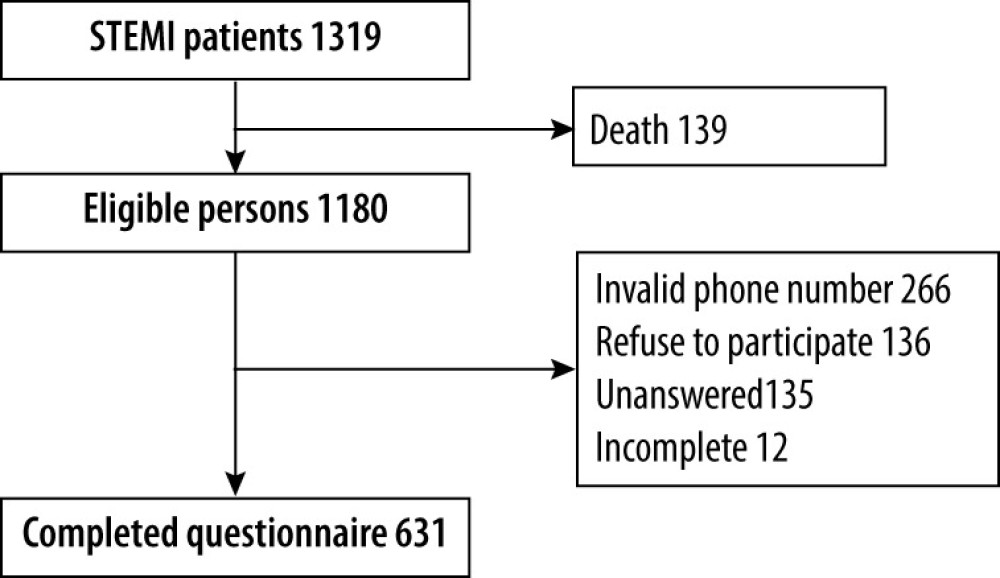13 September 2021: Clinical Research
Rural and Female Patients with Old Myocardial Infarction Lacked Knowledge and Preventive Measures During the Beginning of the COVID-19 Epidemic in Chongqing, Southwest China
Maolin Cao1BCEF, Yan Chen1ABEF, Aihua Wang2BC, Rongping Xiang3BC, Zijun Chen1ABG*DOI: 10.12659/MSM.928512
Med Sci Monit 2021; 27:e928512
Abstract
BACKGROUND: Coronavirus disease 2019 (COVID-19) has emerged as a global threat. This study was performed to gain an understanding of COVID-19-related knowledge, attitudes, and practices among susceptible individuals.
MATERIAL AND METHODS: Patients who had been diagnosed with old myocardial infarction were followed up via telephone survey based on an established follow-up system at the beginning of the COVID-19 outbreak (January 2020) in Chongqing, Southwest China.
RESULTS: A total of 631 eligible patients participated in this survey, and 40.6% of the rural respondents did not know the transmission routes of SARS-CoV-2, which was higher than the proportion of urban respondents (40.6% vs 31.0). Rural residents had a lower rate of adopting preventive measures than urban residents, such as wearing masks (76.7% vs 90.1%), avoiding meetings and gatherings (58.6% vs 68.5%), and hand washing (56.0% vs 63.8%). A higher percentage of women than men did not take any preventive measures (11.3% vs 7.6%), while a lower percentage of women than men wore masks (77.7% vs 84.5%). Multiple logistic regression revealed that rural patients were more likely to lack knowledge about transmission (odds ratio (OR): 1.51). Rural patients had an increased risk of failing to implement protective measures.
CONCLUSIONS: Female and rural populations lacked knowledge and failed to adopt protective measures during the beginning of the COVID-19 epidemic. Therefore, these populations may benefit from health education campaigns and policies.
Keywords: Circumcision, Female, SARS Virus, COVID-19, Female, Health Behavior, Health Knowledge, Attitudes, Practice, Humans, Rural Population, SARS-CoV-2
Background
Since December 2019, pneumonia patients with fever, cough, fatigue, and dyspnea have been identified in Wuhan, China, and the disease is currently known as coronavirus disease 2019 (COVID-19) [1–3]. Chinese scholars isolated the RNA of the related virus from patient secretions and named the entity the 2019 novel coronavirus (2019-nCoV) [4]. Later, the virus was given the name severe acute respiratory syndrome coronavirus 2 (SARS-CoV-2). Analysis of the structure of SARS-CoV-2 revealed that the receptor-binding domain (RBD) of the S protein of SARS-CoV-2 is similar to that of SARS-CoV, allowing the virus to bind to angiotensin-converting enzyme 2 (ACE2) protein. The ACE2 gene and protein are mainly expressed in the airway epithelium of the lung, cardiac endothelium, vascular endothelium, intestinal epithelium, and eccrine glands [5,6]. These anatomical foundations suggest that SARS-CoV and SARS-CoV-2 can spread through not only the respiratory tract, but also the digestive tract, and cause lung inflammation and heart injury [4]. In autopsies of patients with SARS, 35% of heart tissue sections contained SARS-CoV RNA and showed evidence of SARS-CoV-induced inflammatory responses. Among patients infected with SARS-CoV-2, 12% had heart injuries [7].
On the one hand, studies have reported that 40% of patients infected with SARS-CoV-2 suffer from cardiovascular and cerebrovascular diseases, 15% suffer from hypertension, and 32–51% of all patients have chronic underlying diseases [7,8]. Therefore, patients with these heart diseases constitute a high-risk population susceptible to COVID-19 [7,8]. On the other hand, during the pandemic, patients with heart disease have been unwilling to visit emergency departments due to the fear of COVID-19, which led to a poor prognosis for such patients [9,10]. Hence, an understanding of the level of mastery of COVID-19-related knowledge and the level of adoption of preventive measures in this susceptible population is conducive to COVID-19 prevention in high-risk patients with heart diseases. However, no survey to date has focused on knowledge and preventive measures among these high-risk patients. Thus, the aim of this study was to assess knowledge, attitudes, and practices (KAP) related to COVID-19 in this high-risk population with heart disease at the beginning of the COVID-19 outbreak in Chongqing, Southwest China.
Material and Methods
STATISTICAL ANALYSIS:
The data were analyzed using SPSS version 20.0 statistical software (SPSS, Inc., Chicago, IL, USA). Skewed data are presented as the medians and interquartile ranges. Categorical variables are expressed as frequencies (%) and were compared using the chi-squared test or Fisher’s exact test. Multivariate logistic regression was used to analyze the correlations of different demographic backgrounds and psychological states with knowledge about SARS-CoV-2 transmission routes and preventive measures.
Results
KNOWLEDGE, ATTITUDES, AND PRACTICES REGARDING COVID-19 AMONG RESPONDENTS:
A higher percentage of female respondents than male respondents did not adopt any preventive measures (13.3% vs 5.6%, P=0.001), while a lower percentage of female respondents than male respondents wore masks (77.7% vs 86.9%, P=0.005). In terms of mental health and psychological states, no significant difference in the degree of worry was found between male and female respondents, who were all confident that the country could successfully control the epidemic (Table 2).
The percentage of rural respondents who did not know the transmission routes of SARS-CoV-2 was 40.6%, which was higher than the percentage (31.0%) of urban respondents (P=0.012). The rural respondents had lower rates than the urban respondents for the adoption of different preventive measures, such as wearing masks (76.7% vs 90.1%, P < 0.001), avoiding meetings and gatherings (58.6% vs 68.5%, P=0.011), and hand washing (56.0% vs 63.8%, P=0.036. The rural and urban respondents all had a calm mood, and 95.1% of the respondents believed that this epidemic could be overcome through the control measures of the state (Table 2).
Rural women lagged behind urban women in terms of their knowledge related to the transmission routes of SARS-CoV-2 and the adoption of relevant preventive and control measures. Specifically, the percentage (48.6%) of rural women who did not know the transmission routes of SARS-CoV-2 was higher than the percentage (21.9%) of corresponding urban women. The percentages of rural vs urban women who adopted the preventive measures of wearing masks and hand washing were 65.7% vs 84.4% (P=0.002) and 50% vs 69.8% (P=0.01), respectively. Rural men also lagged behind urban men in the adoption of preventive measures (all P<0.05) (Table 3).
FACTORS AFFECTING KNOWLEDGE ABOUT TRANSMISSION AND PROTECTION AND PREVENTION METHODS AMONG PATIENTS:
Multiple logistic regression revealed that rural patients had a higher risk of lacking knowledge about transmission (odds ratio (OR): 1.51, 95% confidence interval (CI): 1.08–2.11). At the same time, they had a lower risk of acquiring knowledge about droplet transmission (OR: 0.63, 95%CI: 0.45–0.87). Additionally, psychological states, especially extreme worry, significantly increased the risk of lacking knowledge about droplet transmission (OR: 2.04, 95%CI: 1.04–4.01) (Table 4).
In terms of protection and prevention methods, females were less likely to wear masks (OR: 0.46, 95%CI: 0.28–0.75). Rural patients were less likely to adopt protective measures, including wearing a mask (OR: 0.31, 95%CI: 0.19–0.50), avoiding meetings and gatherings (OR: 0.64, 95%CI: 0.46–0.89), opening windows for ventilation (OR: 0.51, 95%CI: 0.34–0.77), washing hands frequently (OR: 0.72, 95%CI: 0.52–0.73), disinfection (OR: 0.45, 95%CI: 0.28–0.73), and none (OR: 3.16, 95%CI: 1.66–5.99). In addition, the degree of worry may affect patients’ willingness to wear a mask, with extremely worried people being 3.77 times more likely to wear a mask (95%CI: 1.28–11.13) (Table 5).
Discussion
One of the most important lessons learned from previously treated COVID-19 patients is that early diagnosis and symptomatic treatment can drastically improve the prognosis. Viral RNA screening is the main strategy for controlling COVID-19, and some other biomarkers, such as serum porphobilinogen and aminolaevulinic acid, might be used as screening tools for infected patients in the future [12]. Most importantly, however, prevention is key for individuals and especially healthcare professionals, since effective drugs to treat COVID-19 are lacking.
In our study, we used a previously constructed myocardial infarction follow-up system to interview a population that is susceptible to COVID-19. Among our target population, 70.5% of individuals were aged over 60 years, and 46.4% had a history of hypertension. The population composition in this study was consistent with reported distribution characteristics based on data from infected individuals [7,8]. Therefore, our target population was at high risk for COVID-19 infection.
Our investigation found that among the high-risk population with heart disease, the rural population lacked relevant knowledge and failed to take protective measures, which is similar to observations in a study performed by Elelu, who reported that in Nigeria, the percentage of the population who had adequate knowledge about avian influenza was lower in rural areas than in urban areas (11.1% vs 39.3%, respectively) [13]. Our findings are also consistent with Shengen’s finding that the level of knowledge of the influenza virus H10N8 can be predicted by place of residence [14]. In Pakistan, respondents living in rural areas received lower scores for hepatitis B virus knowledge than did urban residents [15]. The same result was found in Malaysia, where researchers observed that aboriginal communities had lower levels of knowledge of malaria transmission, implementation of practices regarding seeking treatment, and understanding of effective preventive measures [16]. These results were more likely to be observed in developing areas such as economically advantaged regions of South Korea and Italy and even Guangzhou city (the most developed area in China); the tendency for better knowledge and implementation of protective measures in urban populations than in rural populations was not clearly reflected in the KAP scores for influenza and pneumonia vaccinations or the KAP score for H7N9 [17–19], indicating that economic imbalances played an important role in the perception of disease. Useful measures are needed in rural areas to improve medical knowledge among rural residents, such as increasing financial support. Improving access to and utilization of the healthcare system in rural areas should be a priority for public health agencies in rural China.
Female respondents lagged behind male respondents in the use of preventive measures, reflecting a significant sex-based difference that may be related to the socioeconomic status of women [20]. Similar research on avian influenza found that females had a lower level of knowledge than males (8% vs 37%), took fewer preventive measures than males (24.2% vs 43.9%), and felt more nervous than males during the epidemic (31% vs 19%) [18]. However, these findings did not correspond to those of a KAP study performed in Hong Kong, where the authors found that females with chronic disease practiced better preventive behaviors during the H7N9 avian influenza epidemic [21]. This finding may be attributed to a better education level, which was a strong predictor of KAP scores in such developed areas [21].
Female and rural respondents lacked knowledge about virology, which directly led to a lower likelihood of adopting preventive measures, such as wearing masks, avoiding meetings and gatherings, and washing hands. A lower level of knowledge of virology has been shown to correspond to a lower percentage of individuals adopting self-protecting measures [21]. Perception of the threat of avian influenza H5N1 and knowledge of the risk of eating infected birds were factors that motivated respondents to seek healthcare in Vietnam [22].
Wearing masks, especially N95 respirators, offers important protection against airborne and droplet-spread transmission of infectious agents. Unfortunately, we found that the degree of adoption of the practices of wearing masks and hand washing was insufficient in rural areas. Hand washing is the most economical and effective means of preventing digestive tract diseases. Since the ACE2 receptor is also expressed in the intestines and skin [6], SARS-CoV-2 transmission through the digestive tract is possible. Therefore, hand washing should be strongly promoted, especially in rural areas. Although an analysis of clinical data suggested that males are more susceptible to SARS-CoV-2 than females [7,8], females should still strictly follow preventive measures. The next step in prevention and control should focus on female and rural populations. Public dissemination of knowledge about COVID-19 prevention can facilitate control of the epidemic and help decision-making bodies make appropriate decisions.
Our results also showed that new media platforms such as WeChat (TikTok) and Weibo have become major information sources for an increasing number of people. While these platforms facilitate the exchange of useful information, they also provide space for rumors and false news, which may increase the public’s anxiety, especially during the epidemic. Although our results showed that mild anxiety was the main public mood, some intervention guidelines and measures had been released to intervene in psychological disorders [20], reflecting great progress compared with the situation during SARS when such interventions were seldom reported [24].
This study was performed in a province neighboring Hubei Province (the epidemic center). The conclusions can be applied to neighboring provinces of Hubei Province as well as other rural areas. However, this study had some limitations. First, this survey reflected only the degree of SARS-CoV-2 infection prevention knowledge among patients during the follow-up period at the beginning of the epidemic. With the strengthening of publicity, patients may be continuously exposed to information about virology and accumulate relevant knowledge, which may lead to changes in related data. Second, the preventive measures described in the current investigation were based on current recommendations. Further in-depth studies of this virus may reveal new mechanisms of infection and pathogenesis and may consequently result in new preventive measures. For example, high expression of ACE2 protein in the intestinal tract and skin epithelia [16] suggests that the digestive tract and direct contact are possible transmission routes of SARS-CoV-2. Third, due to economic reasons [20], patients with myocardial infarction who sought treatment at tertiary hospitals may not represent all patients with myocardial infarction. Lastly, we did not acquire education data from our respondents, which have proven that a lower education level was associated with an increased risk of SARS-CoV-2 infection [25]. The participants’ education levels were difficult to evaluate, as their mean age was 66 years (range 57–73 years).
Conclusions
Overall, we investigated awareness of the COVID-19 epidemic and the adoption of preventive measures in a susceptible population with previous myocardial infarction. We found that the overall awareness rate was high and that some preventive measures were being taken. Rural and female respondents lagged behind their urban and male counterparts in terms of knowledge of the transmission routes of SARS-CoV-2 and the adoption of preventive measures, and are therefore the focus of the next step in the prevention and control of the epidemic.
Supplementary Materials
THE COVID-19 QUESTIONNAIRE:
Hello! We are the doctors of the Yongchuan Hospital of Chongqing Medical University (The Second People’s Hospital of Chongqing City). We have experienced a new outbreak of coronavirus. We would like to share information with you and your family about the new situation of 2019 coronavirus. We guarantee that your personal privacy will be fully protected. Do you agree?
Tables
Table 1. General characteristics of the respondents.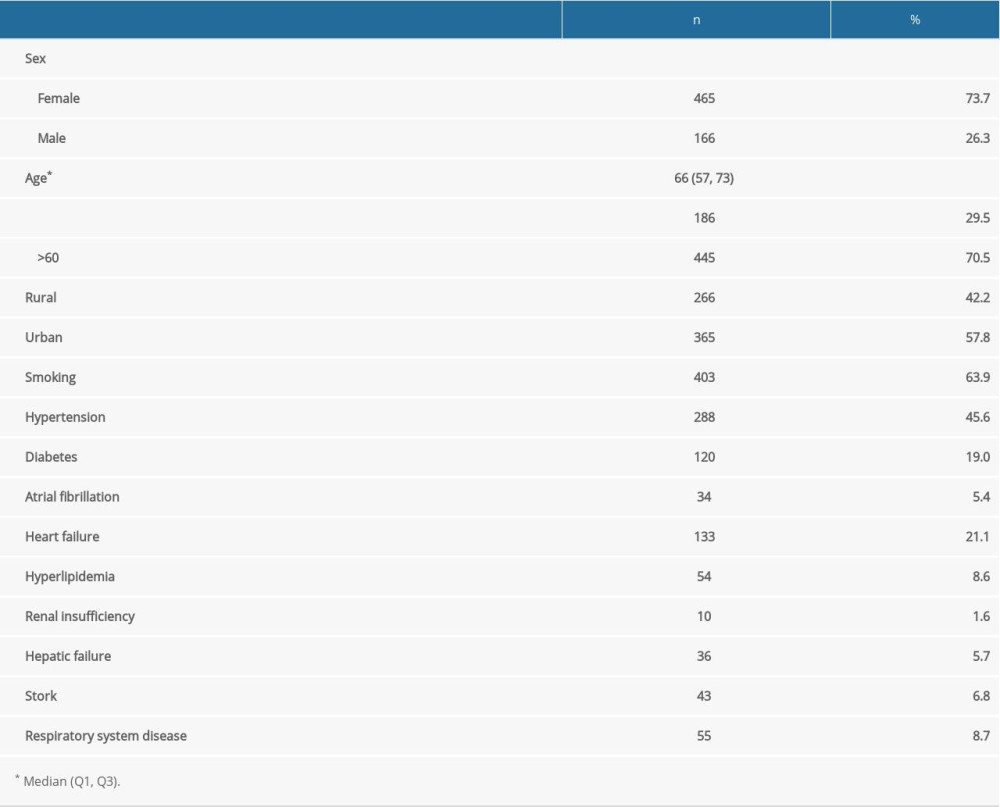 Table 2. Cross-tabulation of knowledge, attitudes, and practices regarding SARS-CoV-2 among respondents.
Table 2. Cross-tabulation of knowledge, attitudes, and practices regarding SARS-CoV-2 among respondents.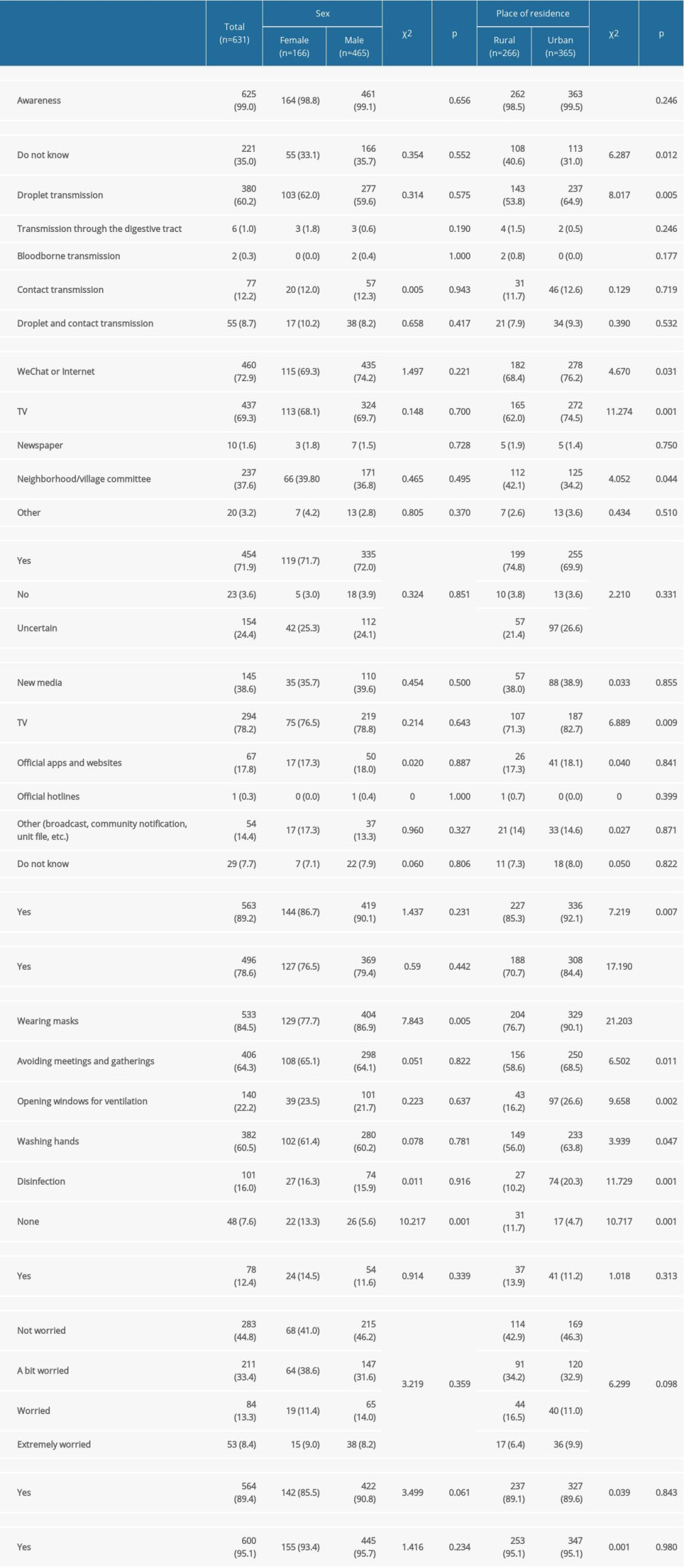 Table 3. The influence of sex and place of residence on the respondents’ awareness.
Table 3. The influence of sex and place of residence on the respondents’ awareness.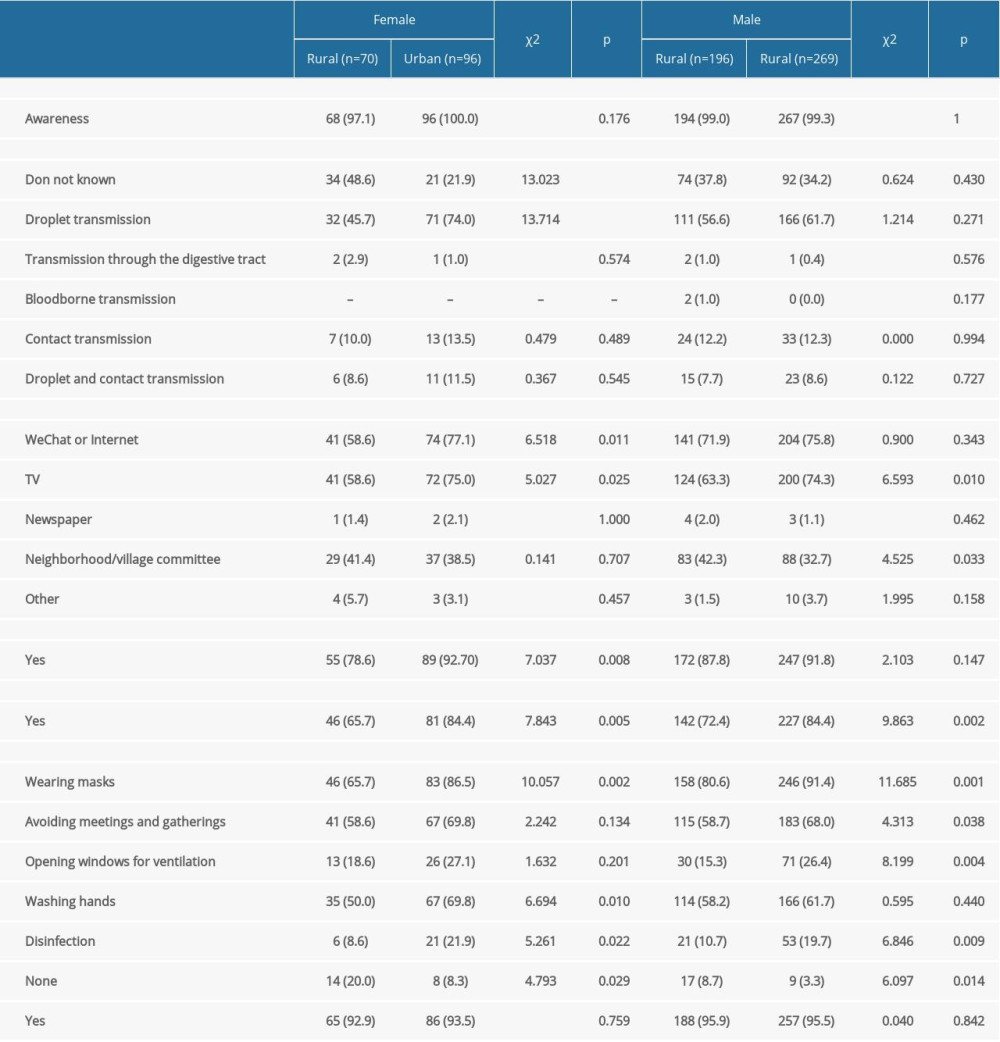 Table 4. Multiple logistic regression analysis of factors associated with knowledge about the transmission of SARS-CoV-2.
Table 4. Multiple logistic regression analysis of factors associated with knowledge about the transmission of SARS-CoV-2.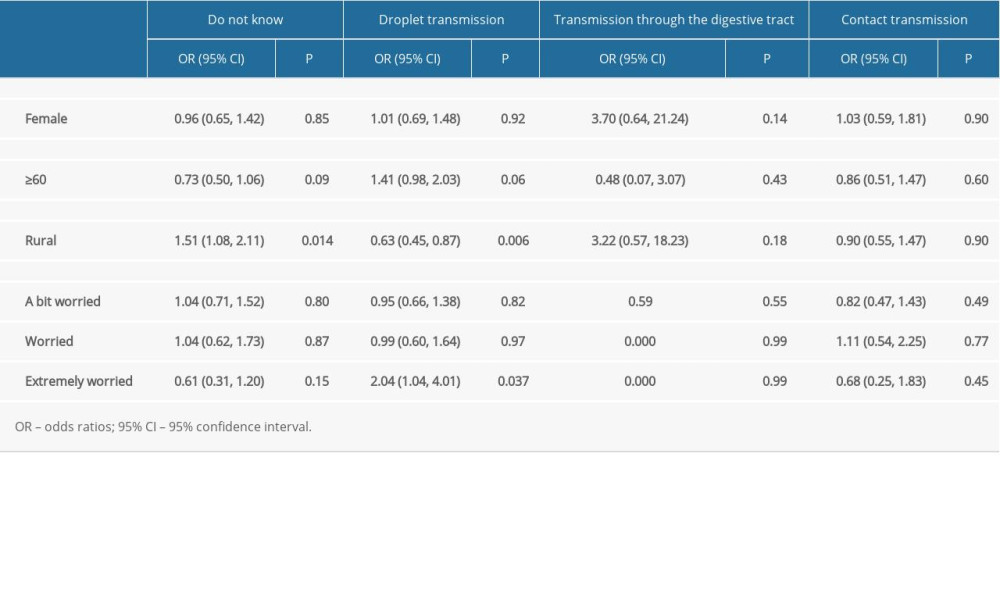 Table 5. Multiple logistic regression analysis of factors associated with the use of SARS-CoV-2 protection and prevention methods.
Table 5. Multiple logistic regression analysis of factors associated with the use of SARS-CoV-2 protection and prevention methods.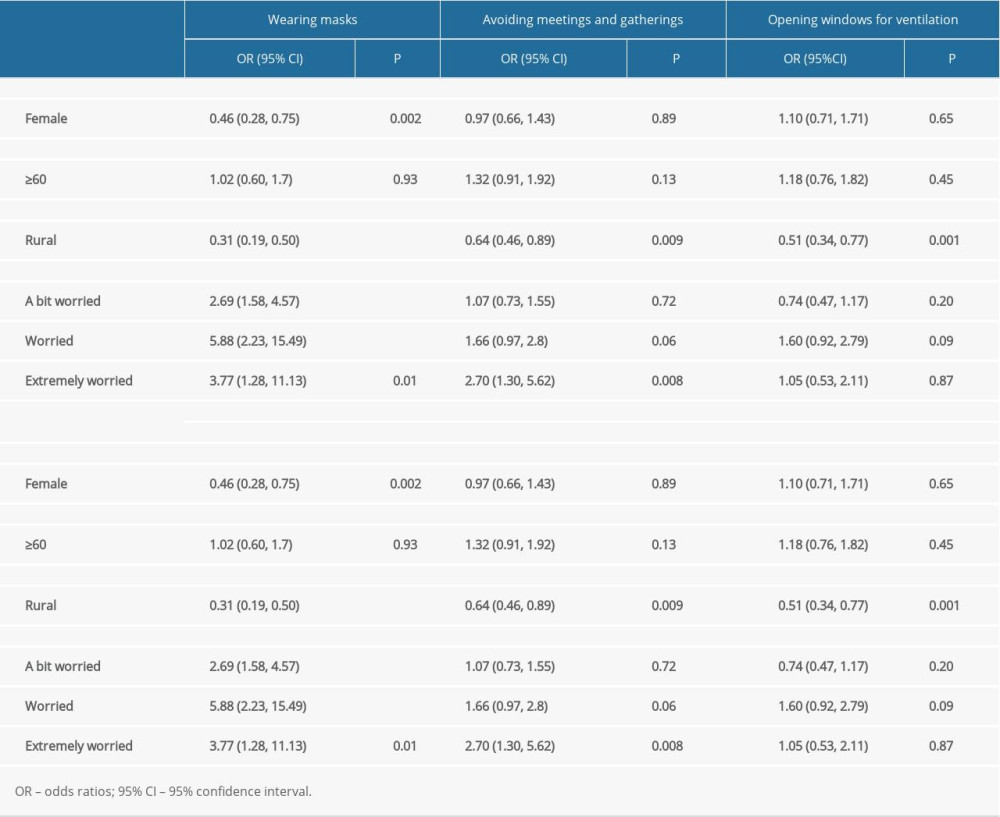
References
1. Lu H, Stratton CW, Tang YW, Outbreak of pneumonia of unknown etiology in Wuhan, China: The mystery and the miracle: J Med Virol, 2020; 92; 401-2
2. Zhou P, Yang X-L, Wang X-G, A pneumonia outbreak associated with a new coronavirus of probable bat origin: Nature, 2020; 579; 270-73
3. World Health Orhanization: Clinical management of severe acute respiratory infection when Novel coronavirus (nCoV) infection is suspected: interim guidance https://www.who.int/internalpublicationsdetail/clinicalmanagementofsevereacuterespiratoryinfectionwhennovelcoronavirus(ncov)infectionissuspected
4. Zhu N, Zhang D, Wang W, A novel coronavirus from patients with pneumonia in China, 2019: N Engl J Med, 2020; 382; 727-33
5. Xu X, Chen P, Wang J, Evolution of the novel coronavirus from the ongoing Wuhan outbreak and modeling of its spike protein for risk of human transmission: Sci China Life Sci, 2020; 63; 457-60
6. Hamming HI, Timens W, Bulthuis ML, Tissue distribution of ACE2 protein, the functional receptor for SARS coronavirus. A first step in understanding SARS pathogenesis: J Pathol, 2004; 203; 631-37
7. Huang C, Wang Y, Li X, Clinical features of patients infected with 2019 novel coronavirus in Wuhan, China: Lancet, 2020; 395; 497-506
8. Wang C, Horby PW, Hayden FG, A novel coronavirus outbreak of global health concern: Lancet, 2020; 395; 470-73
9. Pilato E, Manzo R, Comentale G, COVID-19 and ischemic heart disease emergencies: What cardiac surgery should expect?: Journal of cardiac surgery, 2020; 35; 1161
10. Pilato E, Pinna G, Parisi V, Mechanical complications of myocardial infarction during COVID-19 pandemic: An Italian single-centre experience: Heart Lung, 2020; 49; 779-82
11. Xu J, Wang A, Liu L, The de winter electrocardiogram pattern is a transient electrocardiographic phenomenon that presents at the early stage of ST-segment elevation myocardial infarction: Clin Cardiol, 2018; 41; 1177-84
12. Comentale G, Manzo R, Pilato E, Sars-Cov-2 interference in HEME production: is it the time for an early predictive biomarker?: J Mol Med (Berlin, Germany), 2020; 98; 1053-54
13. Elelu N, Epidemiological risk factors of knowledge and preventive practice regarding avian influenza among poultry farmers and live bird traders in Ikorodu, Lagos State, Nigeria: Int J Vet Sci Med, 2017; 5; 47-52
14. Chen S, Li Z, Hu M, Knowledge, attitudes, and practices (KAP) relating to avian influenza (H10N8) among farmers’ markets workers in Nanchang, China: PLoS One, 2015; 10; e0127120
15. ul Haq N, Hassali MA, Shafie AA, A cross sectional assessment of knowledge, attitude and practice towards Hepatitis B among healthy population of Quetta, Pakistan: BMC Public Health, 2012; 12; 692
16. Tran NT, Choe SI, Taylor R, Knowledge, attitude and practice (KAP) concerning cervical cancer and screening among rural and urban women in six provinces of the Democratic People’s Republic of Korea: Asian Pac J Cancer Prev, 2011; 12; 3029-33
17. Pavia M, Foresta MR, Carbone V, Angelillo IF, Influenza and pneumococcal immunization in the elderly: Knowledge, attitudes, and practices among general practitioners in Italy: Public Health, 2003; 117; 202-7
18. Ma X, Liao Q, Yuan J, Knowledge, attitudes and practices relating to influenza A(H7N9) risk among live poultry traders in Guangzhou City, China: BMC Infect Dis, 2014; 14; 554
19. Lin X, Tao HB, Cai M, Health insurance and quality and efficiency of medical care for patients with acute myocardial infarction in tertiary hospitals in Shanxi, China: A retrospective study: Lancet, 2016; 388; S70
20. Ismail NA, Ahmed HA, Knowledge, attitudes and practices related to avian influenza among a rural community in Egypt: J Egypt Public Health Assoc, 2010; 85; 73-96
21. Liao Q, Cowling BJ, Lam WW, Anxiety, worry and cognitive risk estimate in relation to protective behaviors during the 2009 influenza A/H1N1 pandemic in Hong Kong: Ten cross-sectional surveys: BMC Infect Dis, 2014; 14; 169
22. Manabe T, Tran TH, Doan ML, Knowledge, attitudes, practices and emotional reactions among residents of avian influenza (H5N1) hit communities in Vietnam: PLoS One, 2012; 7; e47560
23. National Health Commission of the People’s Republic of China: Guiding principles for intervention in the emergency psychological crisis in the novel coronavirus epidemic http://www.nhc.gov.cn/jkj/s3577/202001/6adc08b966594253b2b791be5c3b9467.shtml
24. Sim K, Chua HC, The psychological impact of SARS: A matter of heart and mind: CMAJ, 2004; 170; 811-12
25. Han B, Zhao T, Liu B, Public awareness, individual prevention practice, and psychological effect at the beginning of the COVID-19 iutbreak in China: J Epidemiol, 2020; 30; 474-82
Tables
 Table 1. General characteristics of the respondents.
Table 1. General characteristics of the respondents. Table 2. Cross-tabulation of knowledge, attitudes, and practices regarding SARS-CoV-2 among respondents.
Table 2. Cross-tabulation of knowledge, attitudes, and practices regarding SARS-CoV-2 among respondents. Table 3. The influence of sex and place of residence on the respondents’ awareness.
Table 3. The influence of sex and place of residence on the respondents’ awareness. Table 4. Multiple logistic regression analysis of factors associated with knowledge about the transmission of SARS-CoV-2.
Table 4. Multiple logistic regression analysis of factors associated with knowledge about the transmission of SARS-CoV-2. Table 5. Multiple logistic regression analysis of factors associated with the use of SARS-CoV-2 protection and prevention methods.
Table 5. Multiple logistic regression analysis of factors associated with the use of SARS-CoV-2 protection and prevention methods. Table 1. General characteristics of the respondents.
Table 1. General characteristics of the respondents. Table 2. Cross-tabulation of knowledge, attitudes, and practices regarding SARS-CoV-2 among respondents.
Table 2. Cross-tabulation of knowledge, attitudes, and practices regarding SARS-CoV-2 among respondents. Table 3. The influence of sex and place of residence on the respondents’ awareness.
Table 3. The influence of sex and place of residence on the respondents’ awareness. Table 4. Multiple logistic regression analysis of factors associated with knowledge about the transmission of SARS-CoV-2.
Table 4. Multiple logistic regression analysis of factors associated with knowledge about the transmission of SARS-CoV-2. Table 5. Multiple logistic regression analysis of factors associated with the use of SARS-CoV-2 protection and prevention methods.
Table 5. Multiple logistic regression analysis of factors associated with the use of SARS-CoV-2 protection and prevention methods. In Press
05 Mar 2024 : Clinical Research
Muscular Function Recovery from General Anesthesia in 132 Patients Undergoing Surgery with Acceleromyograph...Med Sci Monit In Press; DOI: 10.12659/MSM.942780
05 Mar 2024 : Clinical Research
Effects of Thermal Insulation on Recovery and Comfort of Patients Undergoing Holmium Laser LithotripsyMed Sci Monit In Press; DOI: 10.12659/MSM.942836
05 Mar 2024 : Clinical Research
Role of Critical Shoulder Angle in Degenerative Type Rotator Cuff Tears: A Turkish Cohort StudyMed Sci Monit In Press; DOI: 10.12659/MSM.943703
06 Mar 2024 : Clinical Research
Comparison of Outcomes between Single-Level and Double-Level Corpectomy in Thoracolumbar Reconstruction: A ...Med Sci Monit In Press; DOI: 10.12659/MSM.943797
Most Viewed Current Articles
17 Jan 2024 : Review article
Vaccination Guidelines for Pregnant Women: Addressing COVID-19 and the Omicron VariantDOI :10.12659/MSM.942799
Med Sci Monit 2024; 30:e942799
14 Dec 2022 : Clinical Research
Prevalence and Variability of Allergen-Specific Immunoglobulin E in Patients with Elevated Tryptase LevelsDOI :10.12659/MSM.937990
Med Sci Monit 2022; 28:e937990
16 May 2023 : Clinical Research
Electrophysiological Testing for an Auditory Processing Disorder and Reading Performance in 54 School Stude...DOI :10.12659/MSM.940387
Med Sci Monit 2023; 29:e940387
01 Jan 2022 : Editorial
Editorial: Current Status of Oral Antiviral Drug Treatments for SARS-CoV-2 Infection in Non-Hospitalized Pa...DOI :10.12659/MSM.935952
Med Sci Monit 2022; 28:e935952









